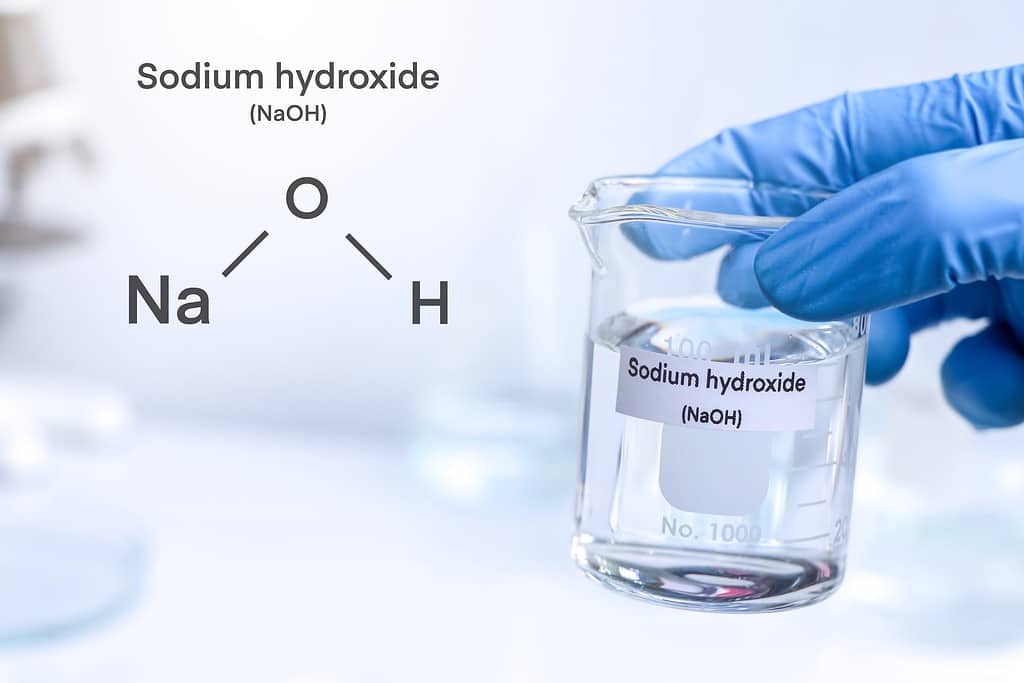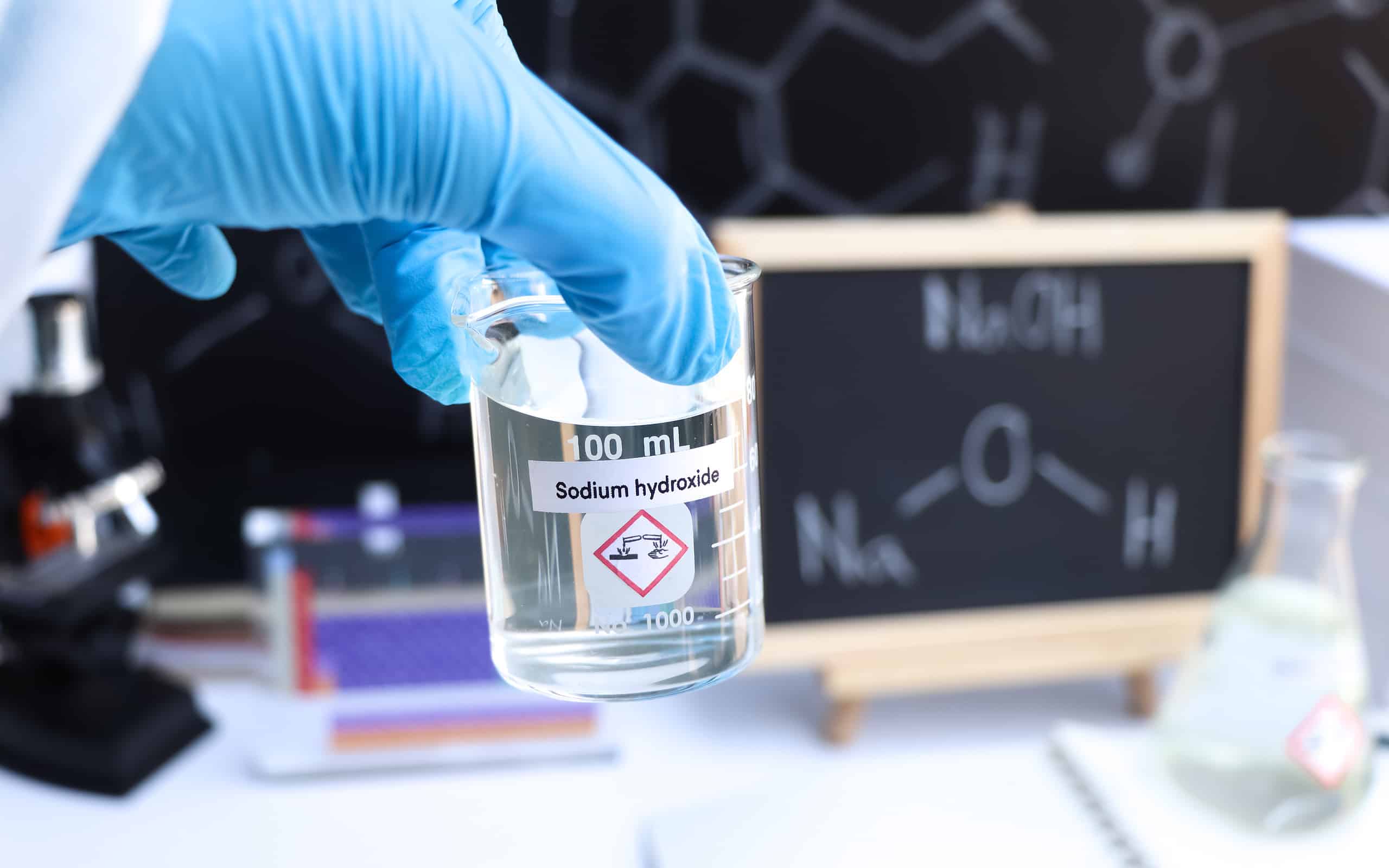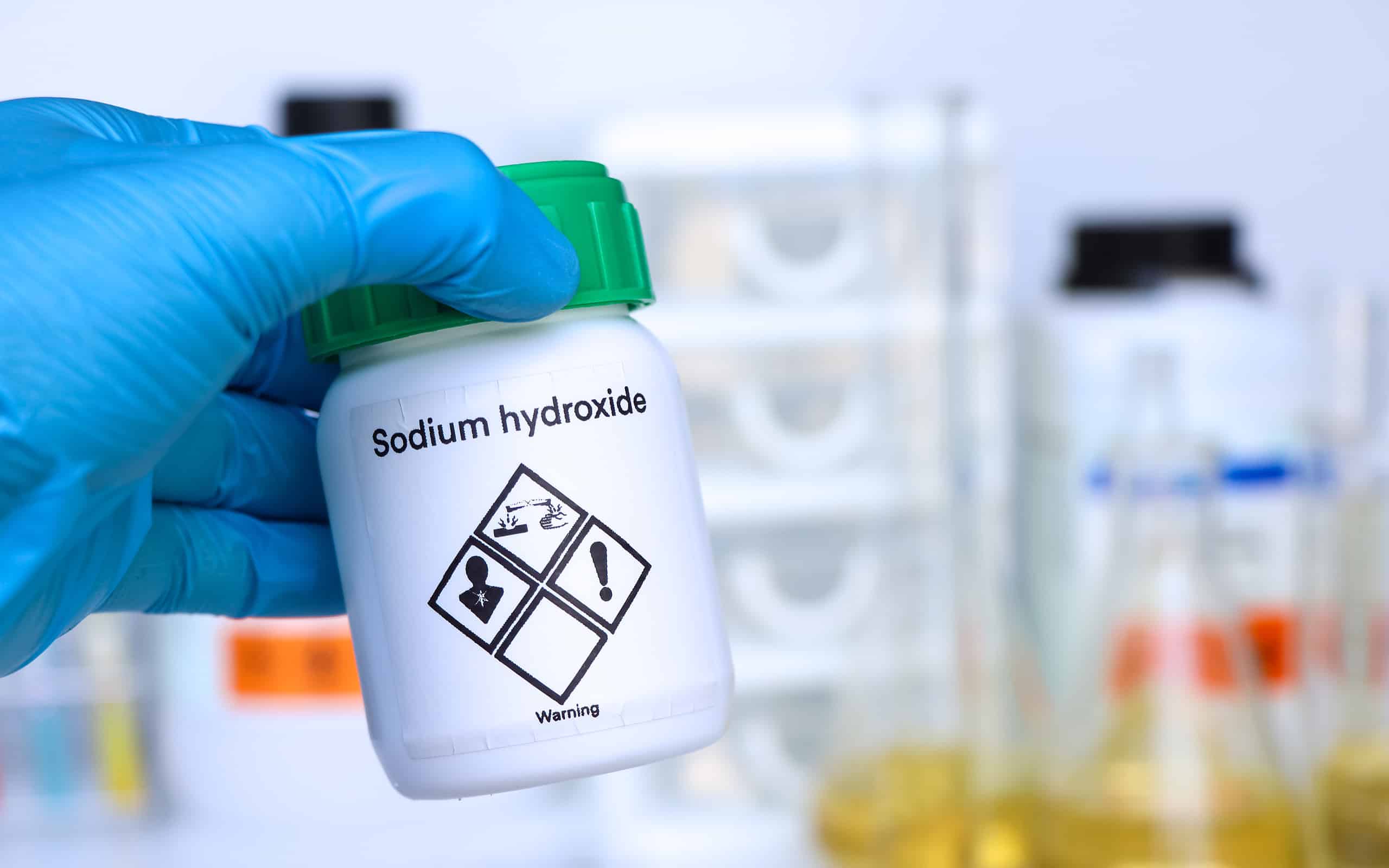The molar mass of chemical compounds is one of the most fundamental concepts in chemistry. It provides essential information about the composition and weight of substances. It also allows chemists to perform various calculations, including determining the number of moles and the amount of a substance in a given sample.
Molar Mass
Molar mass, often referred to as molecular weight, is also a fundamental concept in chemistry that represents the mass of one mole of a chemical substance. Scientists write it in units such as grams per mole (g/mol). Molar mass, therefore, serves as a bridge between the microscopic realm of atoms and molecules and the macroscopic world of measurable quantities.
To calculate the molar mass of a compound, scientists adds up the atomic masses of all the atoms in the chemical formula, considering the number of each type of atom present. This value is crucial in various chemical calculations, because it helps determine the amount of a substance in moles, conduct stoichiometric reactions and understand the properties of materials.
Molar mass is, therefore, a fundamental tool for chemists, enabling them to quantify the mass of substances at the molecular level. Thus, it helps with research, analysis, and synthesis in the field of chemistry.

caustic soda flake on black background
©Kittisak Kaewchalun/iStock via Getty Images
Molar Mass of Sodium Hydroxide (NaOH)
Sodium hydroxide, also known as caustic soda or lye, is a chemical compound with the formula NaOH. To calculate its molar mass, we need to consider the atomic masses of its constituent elements: sodium (Na), oxygen (O), and hydrogen (H).
The atomic mass of sodium (Na): approximately 22.99 grams per mole (g/mol)
While, the atomic mass of oxygen (O): approximately 16.00 g/mol
Finally, the atomic mass of hydrogen (H): approximately 1.01 g/mol
Now, let’s calculate the molar mass of sodium hydroxide (NaOH):
The molar mass of NaOH is equal to the number of Na atoms multiplied by the atomic mass of Na, plus the number of O atoms multiplied by the atomic mass of O, plus the number of H atoms multiplied by the atomic mass of H.
Therefore, the molar mass of NaOH = (1 × 22.99 g/mol) + (1 × 16.00 g/mol) + (1 × 1.01 g/mol)
Therefore, the molar mass of NaOH ≈ 40.00 g/mol
This value indicates that one mole of NaOH contains approximately 40.00 grams of the compound.
Importance of Knowing Molar Mass
Knowing the molar mass of a compound like sodium hydroxide is crucial in various chemical calculations. Here are some important reasons why molar mass matters:
Stoichiometry
Molar mass is essential for stoichiometric calculations, such as determining the amount of reactants needed for a chemical reaction as well as the quantity of products formed.
Concentration
It helps in calculating the concentration of solutions and prepare solutions with precise concentrations.
Percent Composition
Molar mass can help determine the percent composition of elements in a compound, providing insight into its chemical makeup.
Chemical Reactions
It aids in balancing chemical equations by ensuring that the number of atoms of each element conserves in the reaction.
Limiting Reactants
Molar mass can help identify the limiting reactant in a chemical reaction, which determines the maximum amount of product that forms during a chemical reaction.

sodium hydroxide in glass, chemical in the laboratory and industry, corrosive chemical
©Kittisak Kaewchalun/iStock via Getty Images
Real-World Examples
Now that we understand the molar mass of sodium hydroxide and its importance in chemistry, let’s explore some real-world examples of where this compound exists as well as its significance in the real world.
1. Soap and Detergents Production
Example: One of the most well-known applications of sodium hydroxide is in the production of soap and detergents.
Significance: Sodium hydroxide helps in a chemical process called saponification. In this process, sodium hydroxide reacts with fats or oils (fatty acids) to form soap molecules and glycerin. The soap molecules have a polar “head” that attracts water (hydrophilic) and a nonpolar “tail” that attracts grease and dirt (hydrophobic). This unique structure allows soap to remove oils and dirt from surfaces, making it an essential cleaning agent.
2. Paper Manufacturing
Example: The paper industry relies on sodium hydroxide for various stages of paper production, including pulping and bleaching.
Significance: During the pulping process, wood fibers separate from each other and convert into pulp. Sodium hydroxide, thus, acts as a pulping agent to break down lignin, a natural polymer that binds wood fibers together. In the bleaching process, sodium hydroxide also removes impurities and whitens the paper pulp. This results in the production of high-quality paper products used in newspapers, books, and packaging materials.
3. Food Processing
Example: Sodium hydroxide is essential to the food industry for various purposes, including peeling fruits and vegetables and adjusting the pH of certain food products.
Significance: When used for peeling, sodium hydroxide helps remove the outer layers of fruits and vegetables, making them ready for consumption. It also helps in the preparation of certain foods, such as processed corn and pretzels. Additionally, it can also adjust the pH of foods, ensuring they meet safety and quality standards.

caustic soda flake for industrial and laboratory use
©Kittisak Kaewchalun/iStock via Getty Images
4. Textile Industry
Example: The textile industry also uses sodium hydroxide, particularly in a process called mercerization.
Significance: Mercerization is a treatment for cotton fabrics to increase their strength, improve their dye absorption properties, and enhance their overall quality. In this process, cotton fibers mix with a solution of sodium hydroxide. The chemical reaction causes the fibers to swell, resulting in improved texture and appearance.
5. Water Treatment
Example: Sodium hydroxide is a crucial component in water treatment facilities.
Significance: In water treatment facilities, sodium hydroxide can adjust the pH of water. Proper pH control is essential in these facilities to ensure that water is safe for consumption and does not corrode distribution systems like pipes and taps. By neutralizing acidic or alkaline water, sodium hydroxide helps maintain the appropriate pH level in drinking water.
6. Chemical Reactions and Synthesis
Example: Sodium hydroxide is also important in chemical laboratories and industries for various chemical reactions.
Significance: It is a versatile reagent in organic chemistry and significant in reactions such as esterification that can produce esters. Additionally, sodium hydroxide also assists in the manufacture of many pharmaceuticals, including medications and antibiotics.
7. Cleaning and Degreasing
Example: Sodium hydroxide is also a potent cleaning agent.
Significance: It has use cleaning and degreasing equipment, surfaces, and industrial machinery. Its ability to dissolve grease, oils, and organic materials makes it valuable in industrial cleaning processes, automotive maintenance, and the removal of stubborn stains.
8. Oil Refining
Example: Sodium hydroxide is also used in the petroleum industry.
Significance: In the oil refining process, sodium hydroxide helps with desulfurization and neutralization of acidic components in crude oil. This helps improve the quality of petroleum products.

sodium hydroxide and symbol structural formula chemical on the blackboard
©Kittisak Kaewchalun/iStock via Getty Images
9. Neutralization Reactions
Example: Sodium hydroxide is also frequently used in neutralization reactions.
Significance: Neutralization reactions involve the combination of an acid and a base to form water and a salt. Sodium hydroxide is a strong base that can neutralize acids.
For instance, when sodium hydroxide mixes with hydrochloric acid (HCl), it results in the formation of sodium chloride (NaCl) and water (H₂O). These reactions are vital in various contexts, including wastewater treatment, where they help adjust the pH of acidic pollutants before they are released into the environment.
In addition, neutralization reactions are also the first step in the preparation of antacids, which can help with symptoms of acid reflux and indigestion.
10. Esterification
Example: As mentioned earlier, sodium hydroxide is involved in esterification reactions.
Significance: Esterification is a chemical reaction in which an organic acid, often a carboxylic acid, reacts with an alcohol to produce an ester and water. Sodium hydroxide acts as a catalyst in esterification reactions, facilitating the formation of esters.
Esters have a wide range of applications, including uses as fragrances in perfumes and flavorings in the food industry. The esterification process is crucial in creating the scents and tastes that enhance our sensory experiences every day.
11. Pharmaceuticals
Example: As mentioned earlier, sodium hydroxide also has several applications in the pharmaceutical industry.
Significance: In pharmaceutical manufacturing, sodium hydroxide is used as a reagent in various chemical synthesis processes. It plays a role in the production of medications, antibiotics, and other pharmaceutical products. Sodium hydroxide’s involvement in these processes is crucial for ensuring the purity, quality, and safety of pharmaceutical compounds. Precise pH control, usually facilitated by sodium hydroxide, is essential in these pharmaceutical formulas and chemical reactions.
Thus, these real-world examples demonstrate the versatility and significance of sodium hydroxide in various industries and applications. Its ability to interact with all kinds of substances, including fats, oils, and acids, makes it a valuable tool for manufacturing, cleaning, as well as maintaining a wide range of products and processes.
Therefore, sodium hydroxide plays a major role in chemistry and has various significances in our lives.

sodium hydroxide in glass, chemical in the laboratory and industry
©Kittisak Kaewchalun/iStock via Getty Images
Other Elements With a Similar Molar Mass
To provide perspective on the molar mass of sodium hydroxide (NaOH), let’s compare it to the molar masses of other elements and compounds:
| Substance | Molar Mass (g/mol) |
|---|---|
| Sodium Hydroxide (NaOH) | 40.00 |
| Water (H₂O) | 18.02 |
| Carbon Dioxide (CO₂) | 44.01 |
| Table Salt (NaCl) | 58.44 |
| Ethanol (C₂H₅OH) | 46.07 |
| Glucose (C₆H₁₂O₆) | 180.16 |
| Methane (CH₄) | 16.04 |
Other Elements With Relevant Molar Masses
| Substance | Molar Mass (g/mol) |
|---|---|
| Water (H₂O) | 18.02 |
| Glucose (C₆H₁₂O₆) | 180.16 |
| Methane (CH₄) | 16.04 |
Comparing these molar masses helps us understand how the composition of molecules affects their overall mass. For example, sodium hydroxide (NaOH) has a molar mass of 40.00 g/mol, which is significantly higher than that of water (H₂O) at 18.02 g/mol. Therefore, the same amount in terms of moles of sodium hydroxide would be heavier than the same amount in terms of moles of water.
Final Thoughts
In the world of chemistry, understanding the molar mass of compounds like sodium hydroxide (NaOH) is essential for a wide range of applications, from chemical reactions and stoichiometry to industrial processes and water treatment.
Sodium hydroxide, with its molar mass of approximately 40.00 g/mol, plays a vital role in various industries, including soap production, paper manufacturing, and water treatment. It is a versatile compound that has significance and uses in our every day life.
Molar mass is a powerful tool that helps scientists understand the secrets of matter and conduct experiments, leading to innovations and advancements in science and technology. For further exploration, consider studying the molar masses of other compounds as well as their applications in different fields of chemistry.
Thank you for reading! Have some feedback for us? Contact the AZ Animals editorial team.








